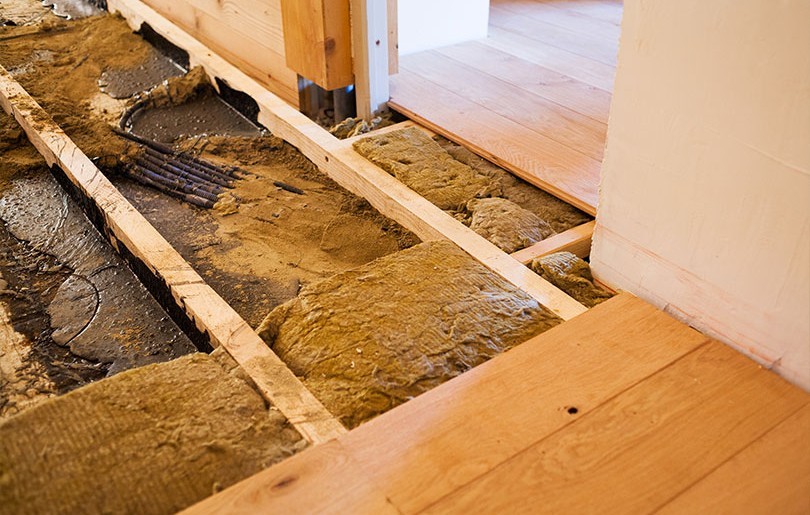Underfloor insulation
Insulating your ground floor is a great way to keep your property warm.
Generally speaking, you only need to insulate the ground floor. If you’re on an upper floor, you don’t usually need to insulate your floor space.
However, you should consider insulating any floors that are above unheated spaces such as garages, as you could be losing a lot of heat through those.
We can provide underfloor insulation using our Home Upgrade Grant Funding if you have no Gas Central Heating and your property has an EPC of D, E, F or G. You would need to have a household income of less than £31,000 or live in an eligible Post Code are (no proof of income required). We can also use ECO funding if you do have a gas boiler.
Many homes – especially newer ones – will have a ground floor made of solid concrete. This can be insulated when it needs to be replaced, or can have rigid insulation laid on top.
Older homes are most likely to have suspended timber floors. If you have air bricks or ventilation bricks on the outside wall(s) of your house that are below floor level, you probably have a suspended timber floor.
Do NOT block up air bricks in your walls. They are needed to help ventilate the space under your floor and stop your floorboards rotting.
If you have a basement or cellar beneath your house that you can get into safely, take a look down there to see what type of floor you have. If the floor is a suspended wooden floor, you will probably be able to see wooden joists and the undersides of the floorboards.
If you don’t have access to the space underneath your house, you will need to lift a corner of the carpet and underlay to have a look.
Timber floors can be insulated by lifting the floorboards and laying mineral wool insulation supported by netting between the joists. Insulating under the floorboards on the ground floor could save you about £110 a year in an average property, or up to £180 if you live in a detached house.
Alternatively, a recent innovation involves a robot applying spray foam insulation to the underside of the floorboards, which would avoid the need to take them up altogether.









